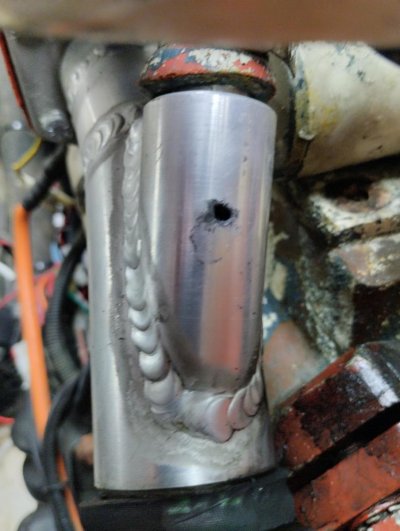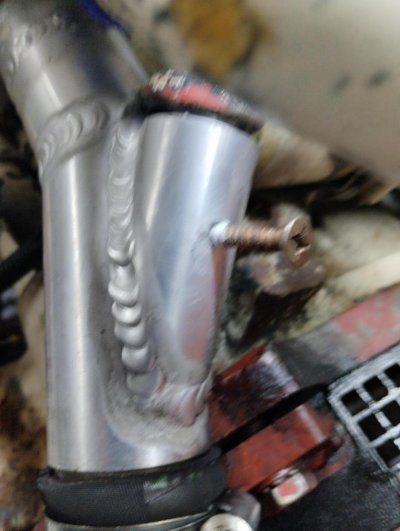Simi 60
Guru
- Joined
- Jul 1, 2016
- Messages
- 5,482
- Location
- Australia
- Vessel Make
- Milkraft 60 converted timber prawn trawler
As the title says...
We had what I assume was the original cast aluminium elbow on ours and at around 2000 hours says the hour metre, it got a gradually worsening hole which I Mcguyvered together for another season with aluminium plate over hole and epoxy glue bandage.
Last time out we had it addressed, a new ebow welded into the stub and 456 hours later we have a bloody hole in it.
What's the story here?
Shouldn't have crapped out this fast surely?
Today's fix is a screw, as the weeks go on it'll get worse and require more creative "fixes".
We had what I assume was the original cast aluminium elbow on ours and at around 2000 hours says the hour metre, it got a gradually worsening hole which I Mcguyvered together for another season with aluminium plate over hole and epoxy glue bandage.
Last time out we had it addressed, a new ebow welded into the stub and 456 hours later we have a bloody hole in it.
What's the story here?
Shouldn't have crapped out this fast surely?
Today's fix is a screw, as the weeks go on it'll get worse and require more creative "fixes".


